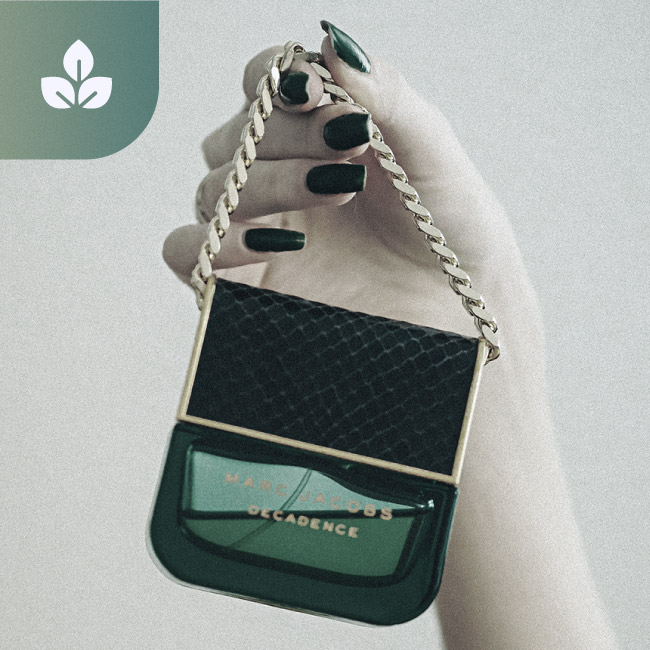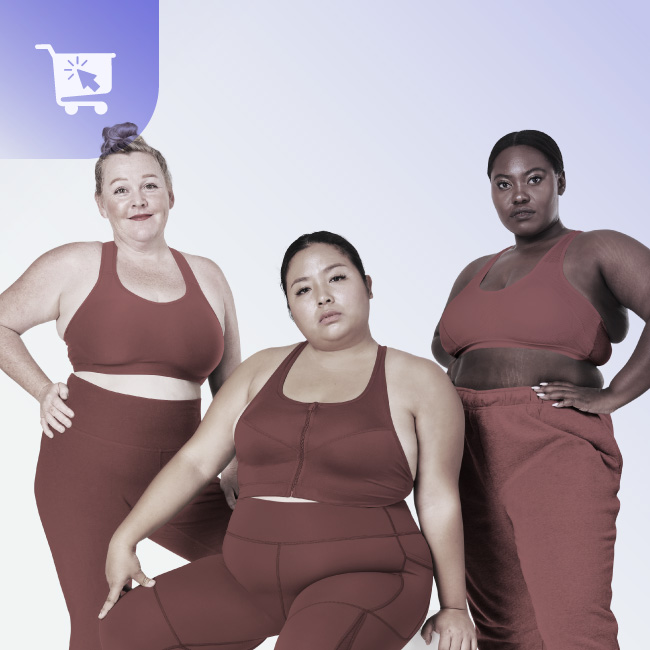
How The Luxury Closet Became A Leading Platform For Luxury Resale In Dubai
About this Podcast:
The Luxury Closet – a market leader in the Middle East is a place to dive deep into the world of high-end products. The online luxury consignment platform houses top luxury brands like Louis Vuitton, Hermes, Piaget, Chanel and many more. A profound understanding of the pre-loved luxury industry since 2011 has been instrumental in their phenomenal efforts in powering circular fashion. In this episode, we have Sid Mitra, CTO of The Luxury Closet – a luxury consignment retailer with over 16 years of experience evangelizing digital innovation across Americas, APACS, Middle East and India.
Episode Transcript:
Akshara Subramanian
Luxury resale already represents a seven billion dollar market today. Online resellers are driving the growth of the pre-owned market well beyond what brick and mortar stores ever did before. And one such company that has successfully implemented this model is The Luxury Closet. They are leading Dubai based online boutique for buying and selling new and free luxury items like handbags, clothes, watches and jewelry. With more than sixteen thousand unique items, as part of this selection, they curate only the best luxury brands, including Louis Vuitton, Chanel, Cartier, Rolex and so many more. We're very happy to host Sid Mitra who is the CTO of the luxury closet. He has over 16 years of experience evangelizing digital innovation across Americas, APACS, Middle East and India. Welcome Sid. It's great to have you on the podcast today.Sid Mitra
Thanks a lot, Akshara. And I'm really excited to talk about the luxury closet with you guys as well. It's my pleasure to be here. Thank you.Akshara Subramanian
Why don't we actually jump right into it? Right. Let's talk a little bit about the luxury closet's business model and how that works.Sid Mitra
Well, yes. I mean, we are a typical consignment based e-commerce platform, which means we are both the seller and the buyer platform. What it means is that we basically allow ourselves to register themselves on our website. And they can, once they register, they can actually submit their items online and they can even bring their items offline in our stores, the ones to submit their items. We just have those items and we price them, evaluate the items. And on the basis of that evaluation, we price those items and we send the prices back to them. And they, of course, would need to approve our prices or send us back for the quotation. So to say, after that process is over and one seller approves our price, we actually get those items in our warehouse where we actually authenticate those items. We have a very exhaustive process of authenticating items. Right. And once we authenticate the items for the condition, for the brand and for the authenticity, at the end of the day, we work on the digital assets of those items. And we then put them online for our end customers or the buyers. Since we are a consignment based e-commerce platform, we make sure that we only pay back to sellers once the items are sold against a payout that was initially promised from our site. And of course, I mean, we make a certain amount of commission out of it. We have different types of sellers working with us - consigners, we have individual sellers, we have VIP sellers and we have professional sellers as well. And we have different modes of integrating with each and every one of them. We are a very unique e-commerce model in a lot of sense. You know, we also make sure that authenticity and experience when it comes to both sellers and buyers and maintained to a great extent. So, yeah, I mean, we are very different and this is predominantly at a high level how the model works, because it's just another very interesting point, we believe in this concept of circular economy, which is to a great extent restorative and regenerative design does against the traditional linear economy. Right. And we feel when I'm when I was explaining the entire model, this is very closely related to this basic philosophy that we have. We feel that we help our shoppers and consignors to believe in this sustainable fashion mantra.Akshara Subramanian
Right. So, yes, I mean, we believe in that motto, so to say. And hence, we are extremely focused to make this work over a period of time and be sustainable in the fashion world.Akshara Subramanian
Right, in fact, I think I see three very strong pillars to what you just said. One part, of course, is the authenticity itself, where there's an elaborate process all the way from what item is on boarded to how it's sold. The second part, of course, is the sustainability angle itself, which is being able to educate your shoppers and make sure that they're very aware of the fact that your model is circular. But the third part, which is also something I wanted to touch upon a bit more, is the experience. Like every time we think of luxury and we think of luxury products, we're thinking of the craftsmanship, the actual touch and feel element and being able to justify what you pay for. So talk to us about how the luxury closet has been able to build that type of customer experience because fashion has had to adapt very quickly during this pandemic and with many brands have had to be very comparable digital experiences since physical store experiences are such an important part of luxury. How are you recreating that whole thing online at the luxury closet?Sid Mitra
True. True. I would agree to what you said. And let me tell you that since you asked about how we are replicating the brick and mortar kind of an experience, especially during this time, right. So let me start by saying that what has been pandemic is done in a sense as it has pushed the quintessential, quote unquote, retail store to a place where they are no longer on the high speeds. Right. But rather on digital platforms like the one that we operate and work on. So, as you said, the challenge here is to make sure and to ensure that customers are getting the same level of luxury service, the same level of experience that they would otherwise get in, quote unquote, brick and mortar store. And hence, there's a lot of responsibility when it comes to maintaining such a technology platform such as a digital platform, when you actually go to a store which is dealing with new luxury or used luxury or pre-loved luxury, so to say. You actually look for a great experience, if you actually go to a Louis Vuitton store, you would see how that is so very different to any other brick and mortar retail store, for instance. So, you know, we always strive to make sure that there's a seamlessness in the way the customers experience our catalog and the way they check out our products and see the brick and mortar experience and it's been our number one driving factor from the time we started off with our digital platform. What that means is that we have to, of course, strike a balance between the experience and the ease of finding the products in a way which is going to be exactly the way they would find and ask for our product. We find our product in the store. Right. So hence user experience, user experience plays a very, very crucial role in the way we showcase our catalog and present our products to the customers. The same goes even for sellers. For the sellers, we also make sure that it's a very unique experience and a very seamless and an easy experience to register themselves in our online platform and then submit their items online. Sid: So, yeah, I mean, coming back to the user experience, I think that's the reason we make sure that we spent a lot of our research on the entire aspect of discoverability, which has to be extremely intuitive, first, to cater to the intent of the customers when they're searching for products, when they're searching for products. And also, we try our best to induce them to buy the right product depending upon their historical preferences. And what do they like and stuff like that. Right. So, I mean, in a sense, what I'm trying to say is personalization is very important. And we are currently working on various aspects of personalizing our customer experiences so that they feel connected with the platform. So the platform is not the same for every customer. Right. In the sense they get to see what is offered to them, depending on what they have previously like, what their behavioral profiles tell us, and what has been their transactional profile in the past. Also, along with this, I must also stress on the fact that the last mile for an e-commerce experience is very important, and hence it's extremely important that we follow the right kind of processes that go post order, right? Once a customer places an order, we have to make sure that it's just not about a fancy box with a ribbon, right. The entire journey of the customer from the user's navigation to the search offers the payments that they use, the security of the platform to the transaction completion to the package arrival at the customer's doorstep. All of that has to be top notch. So all in all, we just want to strive at that excellence and make sure that it is very, very different when you compare to a standard online order from a retailer like Amazon and technology plays a very, very crucial, overarching role in achieving all these services, which I spoke about. So, yeah, I mean, that's how we try and make sure that it's very, very similar to what a brick and mortar experience would look like. We are trying out new audiences on our platform. We constantly test introducing different kinds of digital products to make sure that that gap that you are talking about with this pandemic has also brought about is bridged.Akshara Subramanian
I think what I'm hearing essentially is that trust seems to be the epicenter of the entire experience at that. Right. Obviously, it's not just the way a product is packaged and sent to their customers. It is also about every single journey of the customer experience or whether it's how they discover an item, how secure the payment process is, how the authentication of the product is. All of that seems to be the different pillows, that absolutely wonderful luxury experience on your site. And this is kind of interesting because it brings me to my next question, right. The luxury closet is not just a luxury website, it's a luxury consignment website. So it does have a bit of that resale element over there, which means that that obviously used items, shifted items and pre-loved items on your site. There's a lot of things that people are looking for, even in a pre-loved item. So even if they spend a lot of money, they might be curious to know the condition of the product or the quality of the product. So how is that trust element brought on to the website?Sid Mitra
So we are a platform which stresses a lot on authenticity. I mean, we just make sure that we put all our efforts to authenticate each and every item that we bring in. If you go back to the earlier process of how sellers would actually register in our platform and and submit items. I would say once the items reach us, right, for that evaluation, we have a whole list of assessment criteria, which is very specific to subcategories and individual brands and individual style. For example, each item is evaluated based on a combination of Hallmark, hardware, stitching symmetry, material craftsmanship, stamping, goods, different types of hologram stickers, for example, packaging. And authenticators also check if the items have been modified or amended in any way or they are refurbished in any way, so that we are absolutely not missing out on any such small wins. There's also a lot of craftsmanship which goes into all of this, we have an expert who does that manually. I mean, there are gemologists, ologists, people who are experts in dealing with watches who are actually specifically doing this for all our items. Now, we are also trying to get technology into this as well, into this authentication as well. And we are trying different computer vision models to see what technology can help us achieve, especially in terms of the scale. What I'm indirectly trying to say is, you know, we have defined these two marks for us. So if our model says that this is obviously an authenticated product, we will pass the product right away.Sid Mitra
If our model says that this is really not, obviously not an authentic product. We, of course, make sure that the product doesn't go through. And if the product falls in between these two ranges, ultimately the authenticators would take over who are highly specialized and knowledgeable in dealing with all of that. So it's a unique way and we have not got the technology aspect fully into it. We are evaluating the models because it's very specialized in relative luxury is something which is very different from the run of the mill, quote unquote, fashion. You have different types of lenses, for example, that could be brand style variations, that could be generic styles, that would be brand specific styles. And your model is trying to authenticate it as an automated process to understand all these lenses, to make sure whether it's a completely hundred percent authenticated product or not. Apart from, of course, the manual process, which I explained, so to answer your question, we make sure that every single item that we bring in and listed on our website is completely 100 percent authenticated. Along with that discoverability aspect of customers that is also very genuine and very original. We kind of handhold them at every possible stage. For example, if a customer is spending too much time on our website, we will try and ping him, try to ask him about the feedback, if at all there is any feedback in terms of if there is any difficulty in selecting the right product that he wants.Sid Mitra
We also try and get customer feedback on the user experiences that he's going through. We have the best of the payment processes that can possibly be there for a customer to make use of them. And for every payment issue that they face, we immediately get a notification saying that there's a problem with maybe one of the payment processors and there's a customer which is stuck somewhere and we immediately reach out to the customer just to make sure that, you know, that that lineage of authenticity and that, quote unquote, red carpet experience is maintained.Right. And as I said, we continue with that process even after the order is placed in terms of our experience, in terms of even our personalized mailers that we would send to our customers, which is very specific and personalized to that particular customer. Right. So, yeah, I mean, these are some of the nuances around authentication on discoverability that we try to put in place to make sure that customers always feel that they're dealing with a very, very authenticated up market, very reliable platform.Akshara Subramanian
Wow, it feels like the process of authentication is actually fairly elaborate because it's not something that's very simple. It takes a very solid model at the back end to be able to authenticate every single product that comes in. You have specialists actually look at every single product and make sure that there's nothing that's tampered or nothing.Sid Mitra
And just to add on to this, I would say that we are a very unique model. Right. Which means that every item that we receive is a unique item. We have a single SKU product information management model. Right. Which means that even if you have multiple variants of the same product. Right. Basically in our system, the SKUs are different because they would be used differently. They would be different. The aged, they would have different conditions. Some would be likely used, some would be absolutely as good as new. So we have to make sure that we cannot really rely on preconceived rules which are very, very broad and high level to evaluate products, to price products, to authenticate products and all of that. Right to discover products. So and hence for us at every step, stage and step of retaining customers and acquiring customers, we have to make sure that we understand what our customers are really looking for. And we also understand the products that we are offering to them because every product is different. Right. So, yeah, I mean, it's both a challenge and at the same time a fantastic proposition to solve at the end of the day for all of us to attain that element of sustainability, which I was talking about sometime back.Akshara Subramanian
You know, I'd like to touch upon sustainability a little bit more. We've been talking, obviously, about the growth of the resale market from the very beginning of this podcast and why we talk about high profile bankruptcies, store closures and businesses struggling with that in the last six months. I think the story has been quite different because we spoke to some of our customers and retailers, including companies like ThredUP, Depop and The Upside, who also are specialists in this space. They've been talking about their sales soaring since the pandemic. So this model in some ways seems to be thriving. What do you think are the aspects of it that are making it get?Sid Mitra
Well, you know, as I said, a couple of things, you know, in terms of data points, I think the resale market is expected to grow almost exponentially from the current seven billion to around thirty six, thirty seven billion by twenty twenty four. And this is according to the June report from Global Data. So it's very indicative of the fact that it's working out and it's working out for a couple of reasons. It's profitable and it's sustainable over a period of time. And, you know, another data point would be, as you said, you know, starting from April of 2020 this year, we have seen almost two hundred thirty four million, hundred thirty five million of investments, including that of luxury closet, Vestiaire collective, Fashion Fuel, Rebag - all these companies have raised a lot of money, goes without saying that investors are they they understand what we are doing. And of course it's profitable over a period of time. And it's the talk of the town. So to say, as I said, what's very interesting for us to understand and I'm not sure whether this is the case with everyone else, but for us, what has really worked is the way we acquire customers. Right. Showcasing all of that, as I said, showcasing this entire aspect of very seamless customer experience close to the brick and mortar experience. And also, you know, the red carpet proposition that has helped us to make sure that we acquire our customers as easily as possible and spend as less amount of marketing budget as possible.Sid Mitra
That's very important when we talk about budget and numbers and commercials. Now again, technology has a huge role to play here as well, because, you know, when you are trying to work on customer acquisition costs, you have to make sure that you acquire as much as possible from organic sources. So your organic traffic has to be very, very strong just to let you know that we are heavily spending and heavily focusing on SEO, which is one of the main aspects of bringing in more and more customers online through organic sources, organic channels. We have built the platform in such a way. The infrastructure is built in such a way so that we automatically attract a lot of organic customers. We are extremely light in the way we, our front end works, our back is very, very secured and doesn't really it's not completely different. Then we have a different set of servers, serving bot traffic, different self servers serving customer traffic. We make sure that we have keywords and we have cross-link, which completely trend all the time. And we have a very high visibility score. Just to let you know, we are trending number two in the MENA region when it comes to our visibility and I'm pretty much sure will be number one in some more time in terms of organic traffic. So one of the things to answer your question, which is really, really worked for us, is the way that we have optimized customer acquisition cost. And of course, coupled with that is our you know, the way we have been we have been able to achieve our sales velocity and a lot of factors have contributed towards that.Sid Mitra
I mean, in machine learning parlance, we would say that that's all we need regressors, which ultimately make the Y variable work right. And pricing is definitely one of them. We have been able to completely change the way we price our products as what it used to be previously. And pricing is a challenge because every product is different, their status is different, their conditions are different, and hence the way you would identify your product and put it in a stochastic model, so to say, to identify where it falls and how much it should be priced. And what is the field philosophy that you are looking at against that specific price and looking at all of that is extremely important. And we are further fine tuning our stochastic models, especially when it comes to pricing, to make it much more leaner and much more efficient so that every price that report is approved by the seller and the moment it is approved and it gets listed in our platform sells. So, yeah, I mean, all these different aspects, as I said. Right, starting from customer acquisition cost to the way we price our products, the way we showcase this allows the products to discover, understanding the customer nuances, understanding their intent. All of that has, I think, gone into this success story, so to say.Akshara Subramanian
Right. I was actually going to say the same thing, I was going to sum up all of the things you talked about because they seem to be the key drivers of growth, right? Whether it's pricing or authenticity, discoverability, how you actually present the products on the site. And I wanted to touch upon that a little bit before we jump into another key element, which is technology. So I remember the last week I was browsing on the luxury closet site, and some of your campaigns are extremely compelling and beautiful. And I think you guys focus a lot on also being able to attract the customer from that angle. So what are some of the things that you do from a marketing perspective on the site to really be able to consistently engage with your target audience and your customer?Sid Mitra
What we typically try and do is we try and understand who our customers are. So most of our campaigns are run specifically against a sliced and diced segmentation. And that's where we kind of try and connect to our customers. Right. It's not the overall campaign which is really, really broader in the sense it attracts customers because, you know, we are not talking about the quintessential fashion. We are talking about High-End Fashion. We're talking about preloved fashion. That's right. So it's quite complicated. People have different types of pieces and preferences and they have a lot of inhibitions at times also in that category of customers. So we have to make sure that we understand them. We put them in the right segment before we target them and we target them and organically even attract them, as I said, through technology. So, yeah, I mean, these are some of the marketing tech initiatives that we run. We are currently working on a fully fledged personalization model, which we would also use in our marketing campaigns. We are using it already, but in bits and pieces. We just want to make sure that we make it so we use it as much as possible and not in terms of any way to a segment. We are trying to go towards a model where, you know, we want to do any equal to one segmentation.Sid Mitra
You see, so well, the way we will target customers would be very, very different from one customer to the other customer. The way the customers would come and discover is going to be very different. For example, you would have a very different homepage against mine. Right. And why not? Because, you know, the average order value, the average basket that we have is more than 700 hundred dollars. So, of course, you are not going to be happy seeing products which are at a very, very high level, which is what we just want to sell. No, I mean, you would rather go on our website to show you exactly what you want, what has been your preferences, what has been your persona. And that's exactly what we want to deliver to our customers. And, you know, it's just going to be maybe another quarter where you will see that luxury closet is going to be very different to you as a customer, as against me as a customer. Everything will be very, very personalized. And marketing is, of course, an extension of how we do that customer retention and acquisition. And we will make sure that we help your marketing team with as much as technology to understand and slice and dice customers as much as possible. Right.Akshara Subramanian
Right. I think you touched upon some very, very important points, at least in today's customer experience, which is all about segmentation, not being personalization. You are actively not looking at a segment on a high level. You're looking to go down to the very last detail of a customer.Sid Mitra
So I would like to apologize, but I would also like to stress upon this fact that when it comes to personalization, I see a lot of platforms actually do segmentation at a very high level. Now, of course, I mean, there is this whole start problem that we have where we have to start with the existing segment. And our strategy is not to get stuck there. I mean, we can, of course, start the segment, but over a period of time, we want that segment to kind of degenerate the good sense of the term and ultimately, you know, get to a stage where we can identify that person, that persona. Right. So it's very similar to that of a progressive jpeg. Right. The initial jpeg would be slightly blurry because, you know, the pixel concentration and then as and when we keep on putting the right pixels, it, of course becomes much more clear over a period of time. This is exactly what we are trying to achieve. I think we really don't have any other way out.Sid Mitra
I mean, the kind of customers that we have and the challenge that we have and as you initially started of asking me how can we bridge the gap between the brick and mortar and the digital experience, I think this will ultimately try and do that, because if you actually go to a very high end brand store in any one of the big boys and the way you would see a personalized experience, to the extent that they would identify you as a customer, as in know mathematically and equal to one, and they will try and showcase you. Exactly depending upon the conversations that they would have with you. They'll ask you questions that you have. You have a similar ban, whether you like a specific brand or one of the collections that you have and so on and so forth. So we try to do that, of course, with machine learning and artificial intelligence, not in terms of explicitly asking those questions. But I mean, at the end of the day, the experience is going to be very similar.Akshara Subramanian
Hundred percent. I think everything that you've talked about, personalization obviously is the true essence of personalization and not really how it's put across today by a lot of brands in a very segmented way. But obviously, the biggest and most important part of that is technology and really good technology powers a lot of that. So given that you are obviously the main person who is driving the vision for the luxury closet in terms of technology, can you talk to us about all of the initiatives that you have taken up with?Sid Mitra
I was thinking, frankly speaking, I was thinking, when will you ask me a question around technology? And I got one finally. So thanks for that.Akshara Subramanian
I was trying to save the best one for the last one.Sid Mitra
Yeah. I mean, I think that that's that's the overarching thing. Right. Technology ultimately controls everything else. Right. Starting from the infrastructure. If I just spent probably a couple of minutes on it, I think we have a really solid tech infrastructure. We are on AWS and we are trying to ultimately go towards elastic when over-native service-based, EKS based infrastructure which runs on AWS. Simplistically at a high level, what I'm trying to say is, you know, we are trying to go towards a serverless compute engine built for containers on AWS, which is extremely scalable. Right. Which means that as and when traffic comes in, we expand and then we contract as and when traffic is this is more or less. That's the kind of focus that we have in building our infrastructure. So we really don't bother about scale and we want more and more customers to check our platforms. And hence, you know, we really don't worry much about organic and traffic coming and exploding our website to start off with. We have also invested a lot on various machine learning and artificial intelligence projects when it comes to discoverability, when it comes to search, when it comes to ranking products on our website. So, for instance, every multi-product page or product listing page or whatever you call it, we showcase those products depending on product performance. It's just not manually ranked. This historical performance of the brands are of this kind of product. We also try and make sure that you cannot manually bump it up and down. We have a way by which we can understand false positives and false negatives with such scenarios.Sid Mitra
And we and the entire model around product identification based model, this model that we have built, which identifies how our product should be going up in the first fold versus why it should be in the second, third fold and maybe pushed even further. Right. The way we do and analyze search is also really intuitive. We have built in algorithms which are trying to understand the intent of the customer. Right. So, for instance, I mean, every customer is not as style savvy and brand savvy. Right. But we would try and understand on the basis of the keywords that they're putting in. That's part of the search, right, at customers who are searching to say something which is very specific as a brand style variation. Right, we would know automatically that that particular customer knows about the product that he or she wants because the search has a brand style variation associated with it. Just to give you a small instance, things like that, we have all sorts of cognitive abilities that we have built in and we analyze and then we give out the search results and we also we are investing on suggesting search results and within the next few weeks, you would see stroke based search results very similar to what you see in other platforms like Netflix. Right. So we would understand on the first two, three, four key strokes exactly what you would want and you would kind of recommend similar products that you are trying to search, look forward to. So such kinds of things. The pricing model, I think I explained a little bit before for your other question. The pricing model is extremely intuitive. We have we have we have a way by which we implement we have implemented gaming's and there's a stochastic model on top of it which which identifies the right clusters of products that we are trying to price on.Sid Mitra
And then we try to get the best price out of that. We also are trying to understand how we can manage prices better by evaluating prices and velocity against those prices that we are working on. Overall, I think this is a hotbed of technology, so to say and hence I'm so excited to talk about it because it's a very intuitive platform. Right. And it's just not about the buyer side. It's also about the seller side, how the consignors are working with us, what is expedients at their site as well, how easily they are able to submit their products, how how better we authenticate as it's been before, so that at the end of the day, they also don't get frustrated with the kind of supply that we expect vis a vis what they're bringing to the table. So I think, you know, overall, I think it's a treat to work in a platform like this where you have so many different opportunities in disguise for a technologist like me to just, you know, try and solve one problem after the other. And you go on and on and you are never satisfied with the kind of experience that you want to achieve at the end of the day. So, yeah, I look forward to many more challenges and I look forward to taking this to the next level and in the coming few months or quarters.Akshara Subramanian
Absolutely. And, you know, I think one of the most interesting things I think that came out of the last part of that question was so many brands that we see, especially even in luxury, a lot of them don't even have e-commerce because they still rely on that physical world kind of experience. But I think what you're doing at the luxury closet seems to be extremely cutting edge and very future forward in that you're making sure that irrespective of what the product is, you want the experience to be unparalleled, whether it's digital, whether it's physical or whatever it is. And I think a large part of that is obviously driven by technology.Akshara Subramanian
And it looks like you're building most of that in-house if I'm not wrong. And I think that kind of brings us to the end of our podcast. We got a fantastic understanding of how the luxury closets model looks, every single aspect of the business that you're working on. We're looking forward to watching this company just grow leaps and bounds.Sid Mitra
Thanks a lot and thank you specifically for giving me this opportunity to talk to you. I look forward to many more conversations like this in the future as well. Thanks a lot.Akshara Subramanian
For more other episodes around luxury, retail and sustainability, tune into The Vue Podcast to get your monthly dose. Until then, see you. Bye!Meet your speakers:

Sid Mitra
CTO, The Luxury Closet

Akshara Subramanian
Director, Customer Marketing, Vue.ai







